unmanned aerial vehicle
Unmanned aerial vehicle
From Wikipedia, the free encyclopedia
"UAV" redirects here. For other uses, see UAV (disambiguation).
An MQ-9 Reaper, a hunter-killer surveillance UAV
AltiGator civil drone OnyxStar Fox-C8 XT in flight
UAV launch from an air-powered catapult
Compared to manned aircraft, UAVs are often preferred for missions that are too "dull, dirty or dangerous"[2] for humans. They originated mostly in military applications, although their use is expanding in commercial, scientific, recreational and other applications,[3] such as policing and surveillance, aerial photography, agriculture and drone racing. Civilian drones now vastly outnumber military drones, with estimates of over a million sold by 2015.
Contents
Terminology
Multiple terms are used for unmanned aerial vehicles, which generally refer to the same concept.The term drone, more widely used by the public, was coined in reference to the resemblance of dumb-looking navigation and loud-and-regular motor sounds of old military unmanned aircraft to the male bee. The term has encountered strong opposition from aviation professionals and government regulators.[4]
The term unmanned aircraft system (UAS) was adopted by the United States Department of Defense (DoD) and the United States Federal Aviation Administration in 2005 according to their Unmanned Aircraft System Roadmap 2005–2030.[5] The International Civil Aviation Organization (ICAO) and the British Civil Aviation Authority adopted this term, also used in the European Union's Single-European-Sky (SES) Air-Traffic-Management (ATM) Research (SESAR Joint Undertaking) roadmap for 2020.[6] This term emphasizes the importance of elements other than the aircraft. It includes elements such as ground control stations, data links and other support equipment. A similar term is an unmanned-aircraft vehicle system (UAVS) remotely piloted aerial vehicle (RPAV), remotely piloted aircraft system (RPAS). Many similar terms are in use.
A UAV is defined as a "powered, aerial vehicle that does not carry a human operator, uses aerodynamic forces to provide vehicle lift, can fly autonomously or be piloted remotely, can be expendable or recoverable, and can carry a lethal or nonlethal payload".[7] Therefore, missiles are not considered UAVs because the vehicle itself is a weapon that is not reused, though it is also unmanned and in some cases remotely guided.
The relation of UAVs to remote controlled model aircraft is unclear.[citation needed] UAVs may or may not include model aircraft.[citation needed] Some jurisdictions base their definition on size or weight, however, the US Federal Aviation Administration defines any unmanned flying craft as a UAV regardless of size. A radio-controlled aircraft becomes a drone with the addition of an autopilot artificial intelligence (AI), and ceases to be a drone when the AI is removed.[8]
History
Main article: History of unmanned aerial vehicles
Ryan Firebee was a series of target drones/unpiloted aerial vehicles.
The earliest attempt at a powered UAV was A. M. Low's "Aerial Target" in 1916.[11] Nikola Tesla described a fleet of unmanned aerial combat vehicles in 1915.[12] Advances followed during and after World War I, including the Hewitt-Sperry Automatic Airplane. The first scaled remote piloted vehicle was developed by film star and model-airplane enthusiast Reginald Denny in 1935.[11] More emerged during World War II – used both to train antiaircraft gunners and to fly attack missions. Nazi Germany produced and used various UAV aircraft during the war. Jet engines entered service after World War II in vehicles such as the Australian GAF Jindivik, and Teledyne Ryan Firebee I of 1951, while companies like Beechcraft offered their Model 1001 for the U.S. Navy in 1955.[11] Nevertheless, they were little more than remote-controlled airplanes until the Vietnam War.
In 1959, the U.S. Air Force, concerned about losing pilots over hostile territory, began planning for the use of unmanned aircraft.[13] Planning intensified after the Soviet Union shot down a U-2 in 1960. Within days, a highly classified UAV program started under the code name of "Red Wagon".[14] The August 1964 clash in the Tonkin Gulf between naval units of the U.S. and North Vietnamese Navy initiated America's highly classified UAVs (Ryan Model 147, Ryan AQM-91 Firefly, Lockheed D-21) into their first combat missions of the Vietnam War.[15] When the Chinese government[16] showed photographs of downed U.S. UAVs via Wide World Photos,[17] the official U.S. response was "no comment".
The War of Attrition (1967-1970) featured the introduction of UAVs with reconnaissance cameras into combat in the Middle East.[18]
In the 1973 Yom Kippur War Israel used drones as decoys to spur opposing forces into wasting expensive anti-aircraft missiles.[19]
The Israeli Tadiran Mastiff,
which first flew in 1973, is seen by many as the first modern
battlefield UAV, due to its data-link system, endurance-loitering, and
live video-streaming.[20]
During the 1973 Yom Kippur War, Soviet-supplied surface-to-air missile batteries in Egypt and Syria caused heavy damage to Israeli fighter jets. As a result, Israel developed the first UAV with real-time surveillance.[24][25][26] The images and radar decoys provided by these UAVs helped Israel to completely neutralize the Syrian air defenses at the start of the 1982 Lebanon War, resulting in no pilots downed.[27] The first time UAVs were used as proof-of-concept of super-agility post-stall controlled flight in combat-flight simulations involved tailless, stealth technology-based, three-dimensional thrust vectoring flight control, jet-steering UAVs in Israel in 1987.[28]
With the maturing and miniaturization of applicable technologies in the 1980s and 1990s, interest in UAVs grew within the higher echelons of the U.S. military. In the 1990s, the U.S. DoD gave a contract to AAI Corporation along with Israeli company Malat. The U.S. Navy bought the AAI Pioneer UAV that AAI and Malat developed jointly. Many of these UAVs saw service in the 1991 Gulf War. UAVs demonstrated the possibility of cheaper, more capable fighting machines, deployable without risk to aircrews. Initial generations primarily involved surveillance aircraft, but some carried armaments, such as the General Atomics MQ-1 Predator, that launched AGM-114 Hellfire air-to-ground missiles.
CAPECON was a European Union project to develop UAVs,[29] running from 1 May 2002 to 31 December 2005.[30]
As of 2012, the USAF employed 7,494 UAVs – almost one in three USAF aircraft.[31][32] The Central Intelligence Agency also operated UAVs.[33]
In 2013 at least 50 countries used UAVs. China, Iran, Israel and others designed and built their own varieties.[34]
Classification
Although most UAVs are fixed-wing aircraft, rotorcraft designs (i.e., RUAVs) such as this MQ-8B Fire Scout are also used.
- Target and decoy – providing ground and aerial gunnery a target that simulates an enemy aircraft or missile
- Reconnaissance – providing battlefield intelligence
- Combat – providing attack capability for high-risk missions (see Unmanned combat air vehicle)
- Logistics – delivering cargo
- Research and development – improve UAV technologies
- Civil and commercial UAVs – agriculture, aerial photography, data collection
Schiebel S-100 fitted with a Lightweight Multirole Missile
- Hand-held 2,000 ft (600 m) altitude, about 2 km range
- Close 5,000 ft (1,500 m) altitude, up to 10 km range
- NATO type 10,000 ft (3,000 m) altitude, up to 50 km range
- Tactical 18,000 ft (5,500 m) altitude, about 160 km range
- MALE (medium altitude, long endurance) up to 30,000 ft (9,000 m) and range over 200 km
- High-Altitude Long Endurance (high altitude, long endurance – HALE) over 30,000 ft (9,100 m) and indefinite range
- Hypersonic high-speed, supersonic (Mach 1–5) or hypersonic (Mach 5+) 50,000 ft (15,200 m) or suborbital altitude, range over 200 km
- Orbital low earth orbit (Mach 25+)
- CIS Lunar Earth-Moon transfer
- Computer Assisted Carrier Guidance System (CACGS) for UAVs
U.S. UAV demonstrators in 2005
- Hobbyist UAVs – which can be further divided into
- Ready-to-fly (RTF)/Commercial-off-the-shelf (COTS)
- Bind-and-fly (BNF) – that require minimum knowledge to fly the platform
- Almost-ready-to-fly (ARF)/Do-it-yourself (DIY) – that require significant knowledge to get in the air.
- Midsize military and commercial drones
- Large military-specific drones
- Stealth combat drones
- Micro air vehicle (MAV) – the smallest UAVs that can weight less than 1g.
- Miniature UAV (also called SUAS) – approximately less than 25 kg.
- Heavier UAVs.
UAV components
| This section needs additional citations for verification. (May 2016) (Learn how and when to remove this template message) |
General physical structure of an UAV
Small civilian UAVs have no life-critical systems, and can thus be built out of lighter but less sturdy materials and shapes, and can use less robustly tested electronic control systems. For small UAVs, the quadcopter design has become popular, though this layout is rarely used for manned aircraft. Miniaturization means that less-powerful propulsion technologies can be used that are not feasible for manned aircraft, such as small electric motors and batteries.
Control systems for UAVs are often different than manned craft. For remote human control, a camera and video link almost always replace the cockpit windows; radio-transmitted digital commands replace physical cockpit controls. Autopilot software is used on both manned and unmanned aircrft, with varying feature sets.
Body
The primary difference for planes is the absence of the cockpit area and its windows. Tailless Quadcopters are a common form factor for rotary wing UAVs while tailed mono- and bi-copters are common for manned platforms.Power supply and platform
Small UAVs rely mostly use lithium-polymer batteries (Li-Po), while larger vehicles rely on conventional airplane engines.Battery elimination circuitry (BEC) is used to centralize power distribution and often harbors a microcontroller unit (MCU). Costlier switching BECs diminish heating on the platform.
Computing
UAV computing capability followed the advances of computing technology, beginning with analog controls and evolving into microcontrollers, then system-on-a-chip (SOC) and single-board computers (SBC).System hardware for small UAVs is often called the Flight Controller (FC), Flight Controller Board (FCB) or Autopilot.
Sensors
Proprioceptive sensors give information about the aircraft state. Exteroceptive sensors deal with external information like distance measurements, while exproprioceptive ones correlate internal and external states.[37]Non-cooperative sensors are able to detect targets autonomously so they are used for separation assurance and collision avoidance.[38]
Degrees of freedom (DOF) refer to both the amount and quality of sensors on-board: 6 DOF implies 3-axis gyroscopes and accelerometers (a typical inertial measurement unit – IMU), 9 DOF refers to an IMU plus a compass, 10 DOF adds a barometer and 11 DOF usually adds a GPS receiver.[39]
Actuators
UAV actuators include digital electronic speed controllers (which control the RPM of the motors) linked to motors/engines and propellers, servomotors (for planes and helicopters mostly), weapons, payload actuators, LEDs and speakers.Software
UAV software called the flight stack or autopilot. UAVs are real-time systems that require rapid rsponse to changing sensor data. Examples include RaspberryPis, Beagleboards, etc. shielded with NavIO, PXFMini, etc. or designed from scratch such as Nuttx, preemptive-RT Linux, Xenomai, Orocos-Robot Operating System or DDS-ROS 2.0.| Layer | Requirement | Operations | Example |
|---|---|---|---|
| Firmware | Time-critical | From machine code to processor execution, memory access… | ArduCopter-v1.px4 |
| Middleware | Time-critical | Flight control, navigation, radio management... | Cleanflight, ArduPilot |
| Operating system | Computer-intensive | Optic flow, obstacle avoidance, SLAM, decision-making... | ROS, Nuttx, Linux distributions, Microsoft IOT |
- KKMultiCopter
- ArduCopter
- DroneCode (forked from ArduCopter)
- MultiWii
- BaseFlight (forked from MultiWii)
- CleanFlight (forked from BaseFlight)
- BetaFlight (forked from CleanFlight)
- RaceFlight (forked from Cleanflight)
- Paparazzi
- OpenPilot Copter Control
- TauLabs (forked from OpenPilot)
- CrazyFlie
Loop principles
Typical flight-control loops for a multirotor
- Closed loops – This type incorporates sensor feedback to adjust behavior (reduce speed to reflect tailwind, move to altitude 300 feet). The PID controller is common. Sometimes, feedforward is employed, transferring the need to close the loop further.[40]
Flight controls
Flight control is one of the lower-layer system and is similar to manned aviation: plane flight dynamics, control and automation, helicopter flight dynamics and controls and multirotor flight dynamics were researched long before the rise of UAVs.Automatic flight involves multiple levels of priority.
UAVs can be programmed to perform aggressive manœuvres or landing/perching on inclined surfaces,[41] and then to climb toward better communication spots.[42] Some UAVs can control flight with varying flight modelisation,[43][44] such as VTOL designs.
Communications
Most UAVs use a radio frequency front-end that connects the antenna to the analog-to-digital converter and a flight computer that controls avionics (and that may be capable of autonomous or semi-autonomous operation).Radio allows remote control and exchange of video and other data. Early UAVs[when?] had only uplink. Downlinks (e.g., realtime video) came later.[citation needed]
In military systems and high-end domestic applications, downlink may convey payload management status. In civilian applications, most transmissions are commands from operator to vehicle. Downstream is mainly video. Telemetry is another kind of downstream link, transmitting status about the aircraft systems to the remote operator. UAVs use also satellite "uplink" to access satellite navigation systems.
The radio signal from the operator side can be issued from either:
- Ground control – a human operating a radio transmitter/receiver, a smartphone, a tablet, a computer, or the original meaning of a military ground control station (GCS). Recently control from wearable devices,[45] human movement recognition, human brain waves[46] was also demonstrated.
- Remote network system, such as satellite duplex data links for some military powers.[47] Downstream digital video over mobile networks has also entered consumer markets,[48] while direct UAV control uplink over the celullar mesh is under researched.[49]
- Another aircraft, serving as a relay or mobile control station – military manned-unmanned teaming (MUM-T).[50]
Autonomy
| This section needs additional citations for verification. (May 2016) (Learn how and when to remove this template message) |
Autonomous control basics
Basic autonomy comes from proprioceptive sensors. Advanced autonomy calls for situational awareness, knowledge about the environment surrounding the aircraft from exterioceptive sensors: sensor fusion integrates information from multiple sensors.[37]
Basic principles
One way to achieve autonomous control employs multiple control-loop layers, as in hierarchical control systems. As of 2016 the low-layer loops (i.e. for flight control) tick as fast as 32,000 times per second, while higher-level loops may cycle once per second. The principle is to decompose the aircraft's behavior into manageable "chunks", or states, with known transitions. Hierarchical control system types range from simple scripts to finite state machines, behavior trees and hierarchical task planners.[citation needed]Examples of mid-layer algorithms:
- Path planning: determining an optimal path for vehicle to follow while meeting mission objectives and constraints, such as obstacles or fuel requirements
- Trajectory generation (motion planning): determining control maneuvers to take in order to follow a given path or to go from one location to another[51][52]
- Trajectory regulation: constraining a vehicle within some tolerance to a trajectory
Autonomy features
UAV manufacturers often build in specific autonomous operations, such as:- Self-level: The aircraft stabilizes its altitude.
- Hover: attitude stabilization on the pitch, roll and yaw axes. The latter can be achieved by sensing GNSS coordinates, called alone position hold.
- Care-free: automatic roll and yaw control while moving horizontally
- Take-off and landing
- Failsafe: automatically landing upon loss of control signal
- Return-to-home
- Follow-me
- GPS waypoint navigation
- Pre-programmed tricks such as rolls and loops
UAV's degrees of autonomy
Functions
Full autonomy is available for particular tasks, such as airborne refueling[54] or ground-based battery switching.Higher-level tasks call for greater computing, sensing and actuating capabilities.[55]
| Level | Level descriptor | Observe | Orient | Decide | Act |
|---|---|---|---|---|---|
| Perception/Situational awareness | Analysis/Coordination | Decision making | Capability | ||
| 10 | Fully Autonomous | Cognizant of all within battlespace | Coordinates as necessary | Capable of total independence | Requires little guidance to do job |
| 9 | Battlespace Swarm Cognizance | Battlespace ingerence - Intent of self and others (allied and foes).
Complex/Intense environment - on-board tracking |
Strategic group goals assigned
Enemy strategy inferred |
Distributed tactical group planning
Individual determination of tactical goal Individual task planning/execution Choose tactical targets |
Group accomplishment of strategic goal with no supervisory assistance |
| 8 | Battlespace Cognizance | Proximity inference - Intent of self and others (allied and foes)
Reduces dependence upon off-board data |
Strategic group goals assigned
Enemy tactics inferred ATR |
Coordinated tactical group planning
Individual task planning/execution Choose target of opportunity |
Group accomplishment of strategic goal with minimal supervisory assistance
(example: go SCUD hunting) |
| 7 | Battlespace Knowledge | Short track awareness - History and predictive battlespace
Data in limited range, timeframe and numbers Limited inference supplemented by off-board data |
Tactical group goals assigned
Enemy trajectory estimated |
Individual task planning/execution to meet goals | Group accomplishment of tactical goals with minimal supervisory assistance |
| 6 | Real Time
Multi-Vehicle Cooperation |
Ranged awareness - on-board sensing for long range,
supplemented by off-board data |
Tactical group goals assigned
Enemy trajectory sensed/estimated |
Coordinated trajectory planning and execution to meet goals - group optimization | Group accomplishment of tactical goals with minimal supervisory assistance
Possible: close air space separation (+/-100yds) for AAR, formation in non-threat conditions |
| 5 | Real Time
Multi-Vehicle Coordination |
Sensed awareness - Local sensors to detect others,
Fused with off-board data |
Tactical group plan assigned
RT Health Diagnosis Ability to compensate for most failures and flight conditions; Ability to predict onset of failures (e.g. Prognostic Health Mgmt) Group diagnosis and resource management |
On-board trajectory replanning - optimizes for current and predictive conditions
Collision avoidance |
Self accomplishment of tactical plan as externally assigned
Medium vehicle airspace separation (100's of yds) |
| 4 | Fault/Event Adaptative
Vehicle |
Deliberate awareness - allies communicate data | Tactical group plan assigned
Assigned Rules of Engagement RT Health Diagnosis; Ability to compensate for most failures and flight conditions - inner loop changes reflected in outer loop performance |
On-board trajectory replanning - event driven
Self resource management Deconfliction |
Self accomplishment of tactical plan as externally assigned
Medium vehicle airspace separation (100's of yds) |
| 3 | Robust Response to Real Time Faults/Events | Health/status history & models | Tactical group plan assigned
RT Health Diagnosis (What is the extent of the problems?) Ability to compensate for most failures and flight conditions (i.e. adaptative inner loop control) |
Evaluate status vs required mission capabilities
Abort/RTB is insufficient |
Self accomplishment of tactical plan as externally assigned |
| 2 | Changeable mission | Health/status sensors | RT Health diagnosis (Do I have problems?)
Off-board replan (as required) |
Execute preprogrammed or uploaded plans
in response to mission and health conditions |
Self accomplishment of tactical plan as externally assigned |
| 1 | Execute Preplanned
Mission |
Preloaded mission data
Flight Control and Navigation Sensing |
Pre/Post flight BIT
Report status |
Preprogrammed mission and abort plans | Wide airspace separation requirements (miles) |
| 0 | Remotely
Piloted Vehicle |
Flight Control (attitude, rates) sensing
Nose camera |
Telemetered data
Remote pilot commands |
N/A | Control by remote pilot |
Reactive autonomy
See also: Perceptual control theory
Reactive autonomy, such as collective flight, real-time collision avoidance, wall following and corridor centring, relies on telecommunication and situational awareness provided by range sensors: optic flow,[56] lidars (light radars), radars, sonars.Most range sensors analyze elecromagnetic radiation, reflected off the environment and coming to the sensor. The cameras (for visual flow) act as simple receivers. Lidars, radars and sonars (with sound mechanical waves) emit and receive waves, measuring the round-trip transit time. UAV cameras do not require emitting power, reducing total consumption.
Radars and sonars are mostly used for military applications.
Reactive autonomy has in some forms already reached consumer markets: it may be widely available in less than a decade.[37]
Cutting-edge (2013) autonomous levels for existing systems
Simultaneous localization and mapping
SLAM combines odometry and external data to represent the world and the position of the UAV in it in three dimensions. High-altitude outdoor navigation does not require large vertical fields-of-view and can rely on GPS coordinates (which makes it simple mapping rather than SLAM).[57]Two related research fields are photogrammetry and LIDAR, especially in low-altitude and indoor 3D environments.
- Indoor photogrammetric and stereophotogrammetric SLAM has been demonstrated with quadcopters.[58]
- Lidar platforms with heavy, costly and gimbaled traditional laser platforms are proven. Research attempts to address production cost, 2D to 3D expansion, power-to-range ratio, weight and dimensions.[59] LED range-finding applications are commercialized for low-distance sensing capabilities. Research investigates hybridization between light emission and computing power: phased array spatial light modulators,[60][61] and frequency-modulated-continuous-wave (FMCW) MEMS-tunable vertical-cavity surface-emitting lasers (VCSELs).[62]
Swarming
Further information: Swarm behaviour
Robot swarming
refers to networks of agents able to dynamically reconfigure as
elements leave or enter the network. They provide greater flexibility
than multi-agent cooperation. Swarming may open the path to data fusion.
Some bio-inspired flight swarms use steering behaviors and flocking.[clarification needed]Future military potential
In the military sector, American Predators and Reapers are made for counterterrorism operations and in war zones in which the enemy lacks sufficient firepower to shoot them down. They are not designed to withstand antiaircraft defenses or air-to-air combat. In September 2013, the chief of the US Air Combat Command stated that current UAVs were "useless in a contested environment" unless manned aircraft were there to protect them.[167] A 2012 Congressional Research Service (CRS) report speculated that in the future, UAVs may be able to perform tasks beyond intelligence, surveillance, reconnaissance and strikes; the CRS report listed air-to-air combat ("a more difficult future task") as possible future undertakings.[168] The Department of Defense's Unmanned Systems Integrated Roadmap FY2013-2038 foresees a more important place for UAVs in combat.[169] Issues include extended capabilities, human-UAV interaction, managing increased information flux, increased autonomy and developing UAV-specific munitions.[169] DARPA's project of systems of systems,[63] or General Atomics work may augur future warfare scenarios, the latter disclosing Avenger swarms equipped with High Energy Liquid Laser Area Defense System (HELLADS).[64]Cognitive radio
Cognitive radio[clarification needed] technology may have UAV applications.[65]Learning capabilities
UAVs may exploit distributed neural networks.[37]Market trends
The UAV global military market is dominated by pioneers United States and Israel. The US held a 60% military-maket share in 2006. It operated over 9,000 UAVs in 2014. From 1985 to 2014, exported drones came predominantly from Israel (60.7%) and the United States (23.9%); top importers were The United Kingdom (33.9%) and India (13.2%).[66] Northrop Grumman and General Atomics are the dominant manufacturers on the strength of the Global Hawk and Predator/Mariner systems.The leading civil UAV companies are currently (Chinese) DJI with $500m global sales, (French) Parrot with $110m and (US) 3DRobotics with $21.6m in 2014.[67] As of February 2016, about 325,000 civilian drones were registered with the U.S. FAA, though it is estimated more than a million have been sold in the United States alone.[68]
Some universities offer research and training programs or degrees.[69]
Development considerations
Animal imitation – Ethology
Flapping-wing ornithopters, imitating birds or insects, are a research field in microUAVs. Their inherent stealth recommends them for spy missions.The Nano Hummingbird is commercially available, while sub-1g microUAVs inspired by flies, albeit using a power tether, can "land" on vertical surfaces.[70]
Other projects include unmanned "beetles" and other insects.[71]
Research is exploring miniature optic-flow sensors, called ocellis, mimicking the compound insect eyes formed from multiple facets, which can transmit data to neuromorphic chips able to treat optic flow as well as light intensity discrepancies.
Endurance
UEL UAV-741 Wankel engine for UAV operations
Flight time against mass of small (less than 1 kg) drones.[37]
Because of their small size, weight, low vibration and high power to weight ratio, Wankel rotary engines are used in many large UAVs. Their engine rotors cannot seize; the engine is not susceptible to shock-cooling during descent and it does not require an enriched fuel mixture for cooling at high power. These attributes reduce fuel usage, increasing range/payload.
Hydrogen fuel cells[72] hydrogen power[73][74] may be able to extending the endurance of small UAVs, up to several hours.
Micro air vehicles endurance is so far best achieved with flapping-wing UAVs, followed by planes and multirotors standing last, due to lower Reynolds number.[37]
Solar-electric UAVs, a concept originally championed by the AstroFlight Sunrise in 1974, have achieved flight times of several weeks.
Solar-powered atmospheric satellites ("atmosats") designed for operating at altitudes exceeding 20 km (12 miles, or 60,000 feet) for as long as five years could potentially perform duties more economically and with more versatility than low earth orbit satellites. Likely applications include weather monitoring, disaster recovery, earth imaging and communications.
Electric UAVs powered by microwave power transmission or laser power beaming are other potential endurance solutions.[citation needed]
Another application for a high endurance UAV would be to "stare" at a battlefield for a long interval (ARGUS-IS, Gorgon Stare, Integrated Sensor Is Structure) to record events that could then be played backwards to track battlefield activities.
| UAV | Flight time | Date | Notes |
|---|---|---|---|
| Boeing Condor | 58 hours 11 minutes | 1989 | The aircraft is currently in the Hiller Aviation Museum.
[75] |
| GNAT-750 | 40 hours | 1992 | [76][77] |
| TAM-5 | 38 hours 52 minutes | 11 August 2003 | Smallest UAV to cross the Atlantic
[78] |
| QinetiQ Zephyr Solar Electric | 54 hours | September 2007 | [79][80] |
| RQ-4 Global Hawk | 33.1 hours | 22 March 2008 | Set an endurance record for a full-scale, operational unmanned aircraft.[81] |
| QinetiQ Zephyr Solar Electric | 82 hours 37 minutes | 28–31 July 2008 | [82] |
| QinetiQ Zephyr Solar Electric | 336 hours 22 minutes | 9–23 July 2010 | [83] |
Reliability
Reliability improvements target all aspects of UAV systems, using resilience engineering and fault tolerance techniques.Individual reliability covers robustness of flight controllers, to ensure safety without excessive redundancy to minimize cost and weight.[84] Besides, dynamic assessment of flight envelope allows damage-resilient UAVs, using non-linear analysis with ad-hoc designed loops or neural networks.[85] UAV software liability is bending toward the design and certifications of manned avionics software.[86]
Swarm resilience involves maintaining operational capabilities and reconfiguring tasks given unita failures.[87]
Applications
|
|
The examples and perspective in this section deal primarily with the United States and do not represent a worldwide view of the subject. (January 2016) |
|
|
It has been suggested that this section be split into an article titled Use of UAVs. (Discuss) (March 2016) |
In 2013, the DHL parcel service tested a "microdrones md4-1000" for delivery of medicine.
Interspect UAS B 3.1 octocopter for commercial aerial cartographic purposes and 3D mapping
Civil Drone FOX-C8-HD AltiGator
IAI Heron, an unmanned aerial vehicle developed by the Malat (UAV) division of Israel Aerospace Industries
TAI Anka is a family of unmanned aerial vehicles (UAV) developed by Turkish Aerospace Industries for the requirements of the Turkish Armed Forces
A Hydra Technologies Ehécatl taking-off for a surveillance mission
Military
Main article: UAVs in the U.S. military
As of January 2014, the U.S. military operated 7,362 RQ-11B Ravens; 145 AeroVironment RQ-12A Wasps; 1,137 AeroVironment RQ-20A Pumas; 306 RQ-16 T-Hawk small UAS; 246 Predators and MQ-1C Grey Eagles; 126 MQ-9 Reapers; 491 RQ-7 Shadows and 33 RQ-4 Global Hawk large systems.[88]The MQ-9 Reaper costs $12 million while an F-22 costs over $120 million.[89]
Reconnaissance
See also: Battlefield UAV and reconnaissance aircraft
The Tu-141 "Swift" reusable Soviet reconnaissance drone is intended for reconnaissance to a depth of several hundred kilometers from the front line at supersonic speeds.[90] The Tu-123
"Hawk" is a supersonic long-range reconnaissance drone (UAV) intended
for conducting photographic and signals intelligence to a distance of
3200 km; it was produced beginning in 1964.[91] The La-17P (UAV) is a reconnaissance UAV produced since 1963.[92] In 1945 the Soviet Union began producing "doodlebug".[93] 43 Soviet/Russian UAV models are known.[94]In 2013, the U.S. Navy launched a UAV from a submerged submarine, the first step to "providing mission intelligence, surveillance and reconnaissance capabilities to the U.S. Navy's submarine force."[95]
Attack
Predator launching a Hellfire missile
Defense against UAVs
The US armed forces have no defense against low-level drone attack, but the Joint Integrated Air and Missile Defense Organization is working to repurpose existing systems.[101] Two German companies are developing 40-kW lasers to damage UAVs.[102] Three British companies jointly developed a system to track and disrupt UAV control mechanisms.[103]Targets for military training
Main article: Target drone
Since 1997, the US military has used more than 80 F-4 Phantoms converted into UAVs as aerial targets for combat training of human pilots.[104] The F-4s were supplemented in September 2013 with F-16s as more realistically maneuverable targets.[104]Civil
Civil uses include aerial crop surveys,[105] aerial photograpy,[105] search and rescue,[105] inspection of power lines and pipelines,[106][107] counting wildlife[106] delivering medical supplies to otherwise inaccessible regions,[108] and detecting detection of illegal hunting,[109] reconnaissance operations,[107][110] cooperative environment monitoring,[111] border patrol missions,[107][112] convoy protection,[113] forest fire detection and monitoring,[107] surveillance,[107][114] coordinating humanitarian aid,[115] plume tracking,[116] land surveying,[117] fire and large-accident investigation,[117] landslide measurement,[117] illegal landfill detection,[117] the construction industry[118] and crowd monitoring.[117]US government agencies use UAVs such as the RQ-9 Reaper to patrol borders, scout property and locate fugitives.[119] One of the first authorized for domestic use was the ShadowHawk in Montgomery County, Texas SWAT and emergency management offices.[120]
Private citizens and media organizations use UAVs for surveillance, recreation, news-gathering, or personal land assessment.[121] In February 2012, an animal rights group used a MikroKopter hexacopter to film hunters shooting pigeons in South Carolina. The hunters then shot the UAV down.[122] In 2014, a drone was used to successfully locate a man with dementia, who was missing for 3 days.[123]
Hobby and recreational use
Model aircraft (small UAS) have been flown by hobbyists since the earliest days of manned flight. In the United States, hobby and recreational use of such sUAS is permitted (a) strictly for hobby or recreational use; (b) when operated in accordance with a community-based set of safety guidelines and nationwide community-based organizations; (c) when limited to not more than 55 pounds (with exceptions); (d)without interfering with and giving way to any manned aircraft; and (e) within 5 miles of an airport only after notifying air traffic control.[124] The Academy of Model Aeronautics is a community based organization that maintains operational safety guidelines[125] with a long proven history of effectiveness and safety.Commercial aerial surveillance
Aerial surveillance of large areas is possible with low-cost UAS. Surveillance applications include livestock monitoring, wildfire mapping, pipeline security, home security, road patrol and antipiracy. UAVs in commercial aerial surveillance is expanding with the advent of automated object detection.[126]Professional aerial surveying
UAS technologies are used worldwide as aerial photogrammetry and LiDAR platforms.Commercial and motion picture filmmaking
For commercial drone camerawork inside the United States, industry sources state that usage relies on the de facto consent – or benign neglect – of local law enforcement. Use of UAVs for filmmaking is generally easier on large private lots or in rural and exurban areas with fewer space constraints. In localities such as Los Angeles and New York, authorities have actively interceded to shut down drone filmmaking over safety or terrorism concerns.[127][128][129]In June 2014, the FAA acknowledged that it had received a petition from the Motion Picture Association of America seeking approval for the use of drones for aerial photography. Seven companies behind the petition argued that low-cost drones could be used for shots that would otherwise require a helicopter or a manned aircraft, saving money and reducing risk for pilot and crew.[citation needed] Drones are already used by media in other parts of the world.
UAVs have been used to film sporting events, such as the 2014 Winter Olympics, as they have greater freedom of movement than cable-mounted cameras.[130]
Journalism
Journalists are interested in using drones for newsgathering. The College of Journalism and Mass Communications at University of Nebraska-Lincoln established the Drone Journalism Lab.[131] University of Missouri created the Missouri Drone Journalism Program.[132] The Professional Society of Drone Journalists was established in 2011.[133] Drones have covered disasters such as typhoons.[134] A coalition of 11 news organizations is working with the Mid-Atlantic Aviation Partnership at Virginia Tech on how reporters could use unmanned aircraft to gather news.[135]Law enforcement
Main article: Use of UAVs in law enforcement
Many police departments in India have procured drones for law and order and aerial surveillance.[136][137][138][139]UAVs have been used for domestic police work in Canada and the United States.[140][141] A dozen US police forces had applied for UAV permits by March 2013.[34] In 2013, the Seattle Police Department's plan to deploy UAVs was scrapped after protests.[142] UAVs have been used by U.S. Customs and Border Protection since 2005.[143] with plans to use armed drones.[144] The FBI stated in 2013 that they use UAVs for "surveillance".[145]
In 2014, it was reported that five English police forces had obtained or operated UAVs for observation.[146] Merseyside police caught a car thief with a UAV in 2010, but the UAV was lost during a subsequent training exercise[147] and the police stated the UAV would not be replaced due to operational limitations and the cost of staff training.[147]
In August 2013, the Italian defence company Selex ES provided an unarmed surveillance drone to the Democratic Republic of Congo to monitor movements of armed groups in the region and to protect the civilian population more effectively.[148]
Search and rescue
Aeryon Scout in flight
UAVs have been tested as airborne lifeguards, locating distressed swimmers using thermal cameras and dropping life preservers to swimmers.[152][153]
Scientific research
See also: Research balloon
UAVs are especially useful in accessing areas that are too dangerous for manned aircraft. The U.S. National Oceanic and Atmospheric Administration began using the Aerosonde unmanned aircraft system in 2006 as a hurricane hunter. The 35-pound system can fly into a hurricane and communicate near-real-time data directly to the National Hurricane Center. Beyond the standard barometric pressure
and temperature data typically culled from manned hurricane hunters,
the Aerosonde system provides measurements from closer to the water's
surface than before. NASA later began using the Northrop Grumman RQ-4 Global Hawk for hurricane measurements.Conservation
In 2011, Lian Pin Koh and Serge Wich conceived the idea of using UAVs for conservation-related applications, before coining the term 'Conservation Drone' in 2012.[154]
ShadowView Eco Ranger
Anti-poaching
In June 2012, World Wide Fund for Nature (WWF) announced it would begin using UAVs in Nepal to aid conservation efforts following a successful trial of two aircraft in Chitwan National Park. The global wildlife organization planned to train ten personnel to use the UAVs, with operational use beginning in the fall.[156][157] In August 2012, UAVs were used by members of the Sea Shepherd Conservation Society in Namibia to document the annual seal cull.[158] In December 2013, the Falcon UAV was selected by the Namibian Government and WWF to help combat rhinocerous poaching.[159] The drones will operate in Etosha National Park and will use implanted RFID tags.[160]In 2012, the WWFund supplied two FPV Raptor 1.6 UAVs[161] to Nepal National Parks. These UAVs were used to monitor rhinos, tigers and elephants and deter poachers.[162] The UAVs were equipped with time-lapse cameras and could fly for 18 miles at 650 feet.[163]
In December 2012, Kruger National Park started using a Seeker II UAV against rhino poachers. The UAV was loaned to the South African National Parks authority by its manufacturer, Denel Dynamics of South Africa.[164][165]
Anti-whaling activists used an Osprey UAV (made by Kansas-based Hangar 18) in 2012 to monitor Japanese whaling ships in the Antarctic.[166]
In 2012, the Ulster Society for the Prevention of Cruelty to Animals used a quadcopter UAV to deter badger baiters in Northern Ireland.[167] In March 2013, the British League Against Cruel Sports announced that they had carried out trial flights with UAVs and planned to use a fixed-wing OpenRanger and an "octocopter" to gather evidence to make private prosecutions against illegal hunting of foxes and other animals.[164] The UAVs were supplied by ShadowView. A spokesman for Privacy International said that "licensing and permission for drones is only on the basis of health and safety, without considering whether privacy rights are violated."[164] CAA rules prohibit flying a UAV within 50 m of a person or vehicle.[164][168]
In Pennsylvania, Showing Animals Respect and Kindness used drones to monitor people shooting at pigeons for sport.[169] One of their drones was shot down by hunters.[170]
In March 2013, UAV conservation nonprofit ShadowView, founded by former members of Sea Shepherd Conservation Society, worked with antihunting charity the League Against Cruel Sports to expose illegal fox hunting in the UK.[171] Hunt supporters have argued that using UAVs to film hunting is an invasion of privacy.[172]
In 2014, Will Potter proposed using drones to monitor conditions on factory farms. The idea is to circumvent ag-gag prohibitions by keeping the drones on public property, but equipping them with cameras sensitive enough to monitor distant activities.[173] Potter raised nearly $23,000 in 2 days for this project on Kickstarter.[173]
Pollution monitoring
UAVs equipped with air quality monitors provide real time air analysis at various elevations.[174]Surveying
Oil, gas andmineral exploration and production
Camclone T21 UAV fitted with CSIRO guidance system used to inspect power lines (2009)
In 2012, Cavim, the state-run arms manufacturer of Venezuela, claimed to be producing its own UAV as part of a system to survey and monitor pipelines, dams and other rural infrastructure.[177][178]
Disaster relief
Drones can help in disaster relief by providing intelligence across an affected area.[179]T-Hawk[180] and Global Hawk[181] drones were used to gather information about the damaged Fukushima Number 1 nuclear plant and disaster-stricken areas of the Tōhoku region after the March 2011 tsunami.
Archaeology
In Peru, archaeologists used drones to speed up survey work and protect sites from squatters, builders and miners. Small drones helped researchers produce three-dimensional models of Peruvian sites instead of the usual flat maps – and in days and weeks instead of months and years.[182]"You can go up three metres and photograph a room, 300 metres and photograph a site, or you can go up 3,000 metres and photograph the entire valley."[182]
Drones have replaced expensive and clumsy small planes, kites and helium balloons. Drones costing as little as £650 have proven useful. In 2013, drones flew over Peruvian archaeological sites, including the colonial Andean town Machu Llacta 4,000 m (13,000 ft) above sea level. The drones had altitude problems in the Andes, leading to plans to make a drone blimp.[182]
In Jordan, drones were used to discover evidence of looted archaeological sites.[183]
In September 2014, drones were used for 3D mapping of the above-ground ruins of Aphrodisias and the Gallo-Roman remains in Switzerland.[184][185]
Cargo transport
Main article: Delivery drone
The RQ-7 Shadow can deliver a "Quick-MEDS" canister to front-line troops.
Initial attempts at commercial use of UAVs, such as the Tacocopter company for food delivery, were blocked by FAA regulation.[188] A 2013 announcement that Amazon was planning deliveries using UAVs was met with skepticism.[189]
In 2014, the prime minister of the United Arab Emirates announced that the UAE planned to launch a fleet of UAVs[190] to deliver official documents and supply emergency services at accidents.[191]
Google revealed in 2014 it had been testing UAVs for two years. The Google X program aims to produce drones that can deliver items.[192]
July 16, 2015, A NASA Langley fixed-wing Cirrus SR22 aircraft, flown remotely from the ground, operated by NASA's Langley Research Center in Hampton and a hexacopter drone delivered pharmaceuticals and other medical supplies to an outdoor free clinic at the Wise County Fairgrounds, Virginia. The aircraft picked up 10 pounds of pharmaceuticals and supplies from an airport in Tazewell County in southwest Virginia and delivered the medicine to the Lonesome Pine Airport in Wise County. The aircraft had a pilot on board for safety. The supplies went to a crew, which separated the supplies into 24 smaller packages to be delivered by small, unmanned drone to the free clinic, during multiple flights over two hours. A company pilot controlled the hexacopter, which lowered the pharmaceuticals to the ground by tether. Health care workers distributed the medications to appropriate patients.[193]
The Uvionix Nksy aerial delivery service is planning to allow local shops to deliver goods from a drone.[194] The company wants to deliver fast food, beer, coffee, soda, electronics, prescriptions and personal care products.[194]
Agriculture
A Yamaha R-MAX, a UAV that has been used for aerial application in Japan
UAV are also now becoming an invaluable tool by farmers in other aspect of farming, such as monitoring livestock, crops and water levels. NDVI images, generated with a near-IR sensor, can provide detailed information on crop health, improving yield and reducing input cost. Sophisticated UAV have also been used to create 3D images of the landscape to plan for future expansions and upgrading.[197]
Krossblade SkyProwler transformer UAV for research into vertical take-off and landing technologies for aircraft
Passenger transport
In January 2016, Ehang UAV announced drones capable of carrying passengers.[198]Criminal and terrorist
Some drones have been observed dropping contraband onto U.S. prisons.[199] The New York City Police Department is concerns about drone attacks with chemical weapons, firearms, or explosives; one drone nearly collided with an NYPD helicopter.[200] Others have voiced concerns about assassinations and attacks on nuclear power stations.[201]Uses already seen include:
- Surveilliance for ISIS in Iraq and Syria[201]
- Landing radioactive material on the roof of the Japanese Prime Minister's office[202] possibly in protest of nuclear energy policy
- Incitement of a brawl when a drone flew a flag over a soccer stadium[203]
- Invasion of Israeli airspace by Hezbollah[204]
Existing UAVs
Main article: List of unmanned aerial vehicles
UAVs are being developed and deployed by many countries around the
world. Due to their wide proliferation, no comprehensive list of UAV
systems exists.[32][205]The export of UAVs or technology capable of carrying a 500 kg payload at least 300 km is restricted in many countries by the Missile Technology Control Regime.
As of 2011 China had exhibited some UAV designs, but its ability to operate them was limited by the lack of high endurance domestic engines, satellite infrastructure and operational experience.[206]
Events
Safety
Air traffic
UAVs can threaten airspace security in numerous ways, including unintentional collisions or other interference with other aircraft, deliberate attacks or by distracting pilots or flight controllers.Malicious use
UAVs could be loaded with dangerous payloads, and crashed into vulnerable targets. Payloads could include explosives, chemical, radiologial or biological hazards.Drones with generally non-lethal payloads could possibly be hacked and put to malicious purposes.
Regulation
Main article: Regulation of unmanned aerial vehicles
Ethical concerns and UAV-related accidents have driven nations to regulate the use of UAVs.United States
To operate a UAV for nonrecreational purposes in the US, the FAA requires operators to obtain a Certificate of Authorization.[207] The use of UAVs for law-enforcement purposes is regulated at a state level. For commercial use, the FAA mandates that operators petition for an exemption.[208]In October 2015, the United States Department of Transportation and FAA formed a task force to review the requirements for registering commercial drones.[209]
From December 21, 2015 all hobby type UAV's between 250 grams and 25 kilograms needed to be registered with FAA no later than February 19, 2016.[210]
The new FAA UAV registration process includes requirements for:
- Eligible owners must register their UAV's prior to flight.
- If the owner is less than 13 years old, a parent or other responsible person must do the FAA registration.
- UAV's must be marked with the FAA-issued registration number.[211]
- The registration fee is $5. The registration is good for 3 years and can be renewed for an additional 3 years at the $5 rate.[212]
- A single registration applies to all UAVs owned by an individual. Failure to register can result in civil penalties of up to $27,500 and criminal penalties of up to $250,000 and/or imprisonment for up to three years.[213]
Ireland
The Irish Aviation Authority (IAA) requires specific permission from the IAA for all UAV operations.[214] UAVs over 1 kg must be registered.[215][216]The Netherlands
As of May 2016, the Dutch police is testing trained bald eagles to intercept offending drones.[217][218]South Africa
In April 2014, the South African Civil Aviation Authority announced that it would clamp down on the illegal flying of UAVs in South African airspace.[219] "Hobby drones" with a weigh of less than 7 kg at altitudes up to 500m with restricted visual line-of-sight below the height of the highest obstacle within 300m of the drone are allowed. No license is required for such vehicles.[220]Popular culture
Main article: List of films featuring drones
- Toys (1992) depicts unwitting child soldiers in training to fly UAVs.
- A UCAV AI, called EDI, was central to the sci-fi action film Stealth (2005).
- UAVs feature in video games, such as Tom Clancy's Ghost Recon (2001–), Battlefield (2002–), Call of Duty (2003–), F.E.A.R. (2005) and inFamous (2009).[221]
- An MQ-9 reaper controlled by a rogue supercomputer appears in the film Eagle Eye (2008).
- The hapless would-be terrorists in the film Four Lions (2010) are targeted by and attempt to shoot down an RQ-1 Predator.
- The Bourne Legacy (2012 film) features a Predator UAV pursuing the protagonists.
- An episode of the TV show Castle, first broadcast in May 2013, featured a UAV hacked by terrorists.[222]
- The British movie Hummingbird (2013) ends with ambiguity as to whether the main protagonist is taken down by a drone or not.
- Ennui Ennui (2013), a short film by Portuguese director Gabriel Abrantes, features a self-aware baby-drone sent by Barack Obama in Afghanistan to find and kill a future local warlord.
- 24: Live Another Day, the ninth season of "24", revolves around the usage of UAVs (resembling the BAE Systems Taranis) by terrorists who have created a device to override control from a military base.
- The film Good Kill features the life of an USAF drone pilot.
- The 2008 Ridley Scott film Body of Lies prominently features CIA-operated drones used to surveil the main protagonist as he operates in Iraq, Jordan andSyria.
- The 2016 Miles A. Maxwell short story DRONE in the State Of Reason Mystery series features terrorist drones purchased at local department stores used to take down a jet in a future United States Presidential election.
UAE Drones for Good Award
In 2014, the United Arab Emirates announced an annual international competition and $1 million award, UAE Drones for Good, aiming to encourage useful and positive applications for UAV technology in applications such as in search and rescue, civil defence and conservation. The 2015 award was won by Swiss company Flyability, while the 2016 edition awarded Loon Copter's sea-hybrid UAV.[223]See also
References
- Foundation, Dubai Museum of the Future. "US$ 2 Million 'UAE Drones for Good Award' and 'UAE AI & Robotics Award for Good' Declare Winners". www.prnewswire.com. Retrieved 2016-02-11.
External links
| Wikimedia Commons has media related to Unmanned aerial vehicles. |
| Wikiquote has quotations related to: Drones |
News and stories
- SUAS news, breaking news for professional UAV operators
- Dronelife, UAV news
- Sapiendrone, the most important stories about UAVs
Research and groups
- Center for Unmanned Aircraft Systems, a National Science Foundation Industry & University Cooperative Research Center
- UVS International Non Profit Organization representing manufacturers of unmanned vehicle systems (UVS), subsystems and critical components for UVS and associated equipment, as well as companies supplying services with or for UVS, research organizations and academia.
- The Remote Control Aerial Platform Association, commercial UAS operators
Further reading
- Garcia-Bernardo, Sheridan Dodds, F. Johnson (2016). "Quantitative patterns in drone wars" (PDF). Science direct.
- Hill, J., & Rogers, A. (2014). The rise of the drones: From The Great War to Gaza. Vancouver Island University Arts & Humanities Colloquium Series.
- Rogers, A., & Hill, J. (2014). Unmanned: Drone warfare and global security. Between the Lines. ISBN 9781771131544.
|
||
|
|||
|
When used, UAVs should generally perform missions characterized by the three Ds: dull, dirty, and dangerous.
The War of Attrition was also notable for the first use of UAVs, or unmanned aerial vehicles, carrying reconnaissance cameras in combat.
During the Yom Kippur War the Israelis used Teledyne Ryan 124 R RPVs along with the home-grown Scout and Mastif UAVs for reconnaissance, surveillance and as decoys to draw fire from Arab SAMs. This resulted in Arab forces expending costly and scarce missiles on inappropriate targets [...].
Tim Pool, an Occupy Wall Street protester, has acquired a Parrot AR.Drone he amusingly calls the "occucopter"
FBI Director Robert Mueller said today the bureau was surveiling the United States with drones. The revelation was during an FBI oversight hearing before the Senate Judiciary Committee and comes as the bureau, along with the National Security Agency, are on the defensive about revelations that they are obtaining metadata on Americans’ phone records and Americans’ private data from companies like Google, Facebook, Microsoft andothers. The FBI is not alone in monitoring the U.S. with drones.
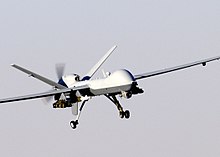


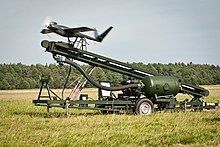
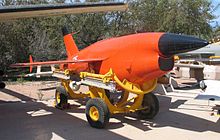
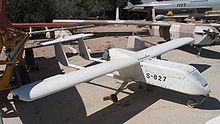
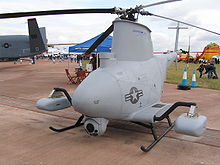


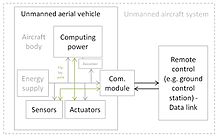
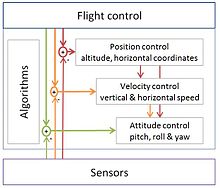

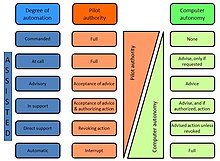


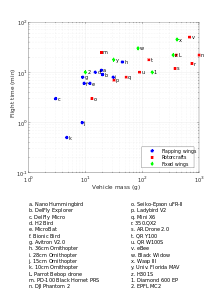



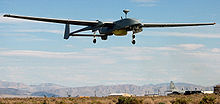

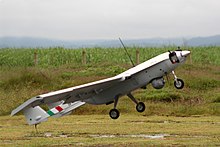

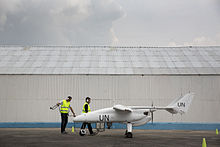
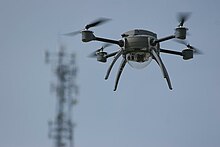






No comments:
Post a Comment